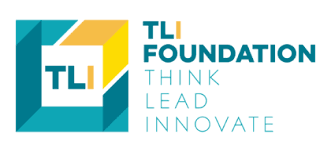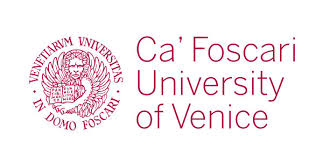Day 2 :
Keynote Forum
Farid Shirazi
Ruerson University | Canada
Keynote: Information & communication technology and the battle for environmental pollution: A global perspective
Time : 09:30-10:15

Biography:
Farid Shirazi has been Graduated from University of Cape Town in Information Systems. He is a Senior Researcher at Institute for Innovation and Technology Management at Ryerson University, Toronto, Canada. He is currently an Associate Director and an Associate Professor of the Ted Rogers school of Information Technology Management. Dr. Shirazi's research focuses mainly on the impact of ICTs on the social and economic development. His main research interests are IT-enabled sustainability and development, Cloud Computing, Bigdata Analytics, E-government strategies, Green IS management as well as the ethical and security perspectives associated with the introduction and use of ICTs.
Abstract:
The positive and negative environmental impacts of information and communication technologies (ICTs) are widely debated. In theory, ICT is among the sources contributing to the increasing levels of CO2 emissions in terms of production of ICT machinery and devices, energy consumption, and recycling of electronic waste For example E-waste is one of the main sources of harmful toxic pollutants such as polyvinyl chlorides, polychlorinated biphenyls, lead, mercury and cadmium among others. E-waste also represents a potent source of valuable metals such as gold, silver, palladium, and copper. However, It is expected that ICT will help us to reduce CO2 emissions on a global scale by developing smarter cities, transportation systems, electrical grids, industrial processes, and energy saving gains. These two effects work in opposite direction, creating an inverted-U relationship between ICT and CO2 emissions.
Given that global warming is a global issue, it is necessary to look at this relationship in countries at all levels of development. To this end, we use a panel data set consisting of 147 economies, over the period 1996–2015. The results of our empirical study confirm that the relationship between ICT and CO2 emissions is an inverted U-shaped relationship. Moreover, while for the sample of developing countries, the ICT turning point is well above the mean value, the opposite is true for the sample of developed countries. This implies that many developed countries have already attained the level of ICT development, at which CO2 emissions decreases as the level of ICT development improves further.
Keynote Forum
Arun Aggarwal
School of Public Health | India
Keynote: Catastrophic expense among general ward indoor patients in tertiary care hospital of North India
Time : 10:15-11:00

Biography:
Arun Kumar Aggarwal is MD in Community Medicine and postgraduate in Health & Hospital Administration. He is Professor in School of Public Health of premier tertiary care institute (PGIMER) at Chandigarh, North India. He has done WHO fellowship in Health Financing & Economics from Bangkok and World Bank online course on Basics of Health Economics.
Abstract:
Data of 190 patients was collected at discharge from ‘General Ward’ of a tertiary care hospital of north India regarding their expense on medicines, supplies, diagnostics and user fees. Information on their poor free status, total household monthly income and expenditure, and total family members and earning members was also captured from them. They were asked if they had to take some loan or dispose of the assets for taking treatment.
Catastrophic expenses by the standard methods (40% of ability to pay or 10% total expenditure) are of not much use for the hospitals and institutions to improve financial protection to improve Universal Health Coverage. In hospitals patients with Below Poverty Line ( BPL) cards are offered free treatment subject to restrictions. Patients generally bear the extra expense on medicines and supplies. Other schemes for poor patients follow stringent income certification process that poor find difficult to follow when in crisis.
This study on ‘General Ward ‘patients gives insight into the influence of various predictors like medical expense (including only direct medical costs) and financial protection mechanisms in terms of poor free status on evidence of catastrophe in form of availing loans and disposing assets.
We found that although poor free status confers some protection; as overall medical expenses were lower in this group, but still even poor free have to incur huge expense and have to borrow money or dispose off assets. Huge expense is on medicines and also supplies. Institute offers substantial protection on user fee and diagnostics. Top ten departments and disease conditions where substantial expense occurs are also listed. Study also highlights the need to offer financial protection to NOT poor free patients in departments with diseases likely to incur large expense.
Recent Publications
- S Prinja, R Gupta, P Bahuguna, A Sharma, AK Aggarwal, A Phogat, (2016). A composite indicator to measure universal health care coverage in India: way forward for post-2015 health system performance monitoring framework. Health Policy and Planning, czw097, Publication date 2016/8/6
- D Balasubramanian, S Prinja, AK Aggarwal (2015). Effect of user charges on secondary level surgical care utilization and out-of-pocket expenditures in Haryana State, India. PloS one 10 (5), e0125202, Date of Publication 2015/5/4
- S Prinja, P Bahuguna, PVM Lakshmi, T Mokashi, AK Aggarwal, M Kaur, .. (2014). Evaluation of publicly financed and privately delivered model of emergency referral services for maternal and child health care in India. PloS one 9 (10), e109911, Date of Publication 2014/10/31
- S Prinja, N Manchanda, AK Aggarwal, M Kaur, G Jeet, R Kumar (2013). Cost & efficiency evaluation of a publicly financed & publicly delivered referral transport service model in three districts of Haryana State, India. Indian Journal of Medical Research 2013, 138 (6):1003
- AK Aggarwal, P Kumar, S Pandit, R Kumar (2013). Accuracy of WHO verbal autopsy tool in determining major causes of neonatal deaths in India. PLoS One 8 (1), e54865, Date of Publication 2013/1/25
- Health Care Services | Health care services and insurance | Health innovation | Health Outcome Research | Health Economics Modelling

Chair
Julia Varga
Hungarian Academy of Sciences | Hungary

Co-Chair
Sarah Neville
Independent Hospital Pricing Authority | Australia
Session Introduction
Rosana Elizabeth Pacella
Queensland University of Technology | Australia
Title: Improved wound management at lower cost: A sensible goal for Australia
Time : 12:20-12:45
Biography:
Rosana Pacella Norman is a Senior Research Fellow at the Australian Centre for Health Services Innovation (AusHSI), at the Queensland University of Technology. She currently leads a large health economics project to reveal the social and economic benefits of optimal wound care across Australia. She also provides health economics expertise for Wound Management Innovation Collaborative Research Centre funded projects assessing cost-effectiveness. She is widely recognized for her leading role in burden of disease assessments carried out over the last 16 years and continues to serve as an expert advisor to the Global Burden of Disease Collaboration and the Australian and South African National Burden of Disease Studies. She has played an important role in Australia, and internationally, in building capacity in burden of disease, health services research and cost-effectiveness analysis among researchers who are employed or contracted by governments. She has published widely in leading international journals.
Abstract:
Statement of the Problem: Chronic wounds cost the Australian health system at least US$2⋅85 billion per year. Wound care services in Australia involve a complex mix of treatment options, health care sectors and funding mechanisms. It is clear that implementation of evidence-based care improves wound healing, reduces recurrence as well as hospitalisation due to complications, amputation and overall burden, yet the majority of Australians with chronic wounds do not receive evidence-based treatment. High initial treatment costs, inadequate reimbursement, poor financial incentives and lack of skilled health care professionals proficient in evidence-based practice are major barriers to the adoption of best practice. In order to secure funding for better services in a competitive environment, evidence of cost-effectiveness is required.
Methodology: This study developed Markov models to analyse the cost-effectiveness of implementing optimal care in comparison with the continuation of usual care for patients with chronic wounds in Australia. Optimal care was defined as wound care that follows the set of recommendations from the Australian official guidelines with full Medicare Benefits Schedule (MBS) and Pharmaceutical Benefits Scheme (PBS) reimbursement linked to services, devices and consumables. Findings: Economic modelling results demonstrate that implementing and funding best practice systems to manage chronic wounds is a cost-saving strategy in Australia and improves health outcomes. Probabilistic sensitivity analysis showed that optimal care always had a higher probability of costing less and generating more health benefits.
Conclusion & Significance: We recommend high-level policy development and investment in evidence-based care to improve affordability and support access to health professionals and multidisciplinary teams. Incentivising cost-effective evidence-based wound care within MBS and listing evidence-based wound products and services on MBS/PBS will not only ease patients’ financial burden but also save considerable costs for the Australian health system.
Recent Publications (minimum 5)
- Norman RE, Gibb M, Dyer A, Prentice J, Yelland S, Cheng Q, Lazzarini P, Carville K, Innes-Walker K, Finlayson K, Edwards H, Burn E, Graves N. Improved wound management at lower costs: a sensible goal for Australia. International Wound Journal 2016; 13(3):303-16.
- Cheng, Qinglu; Lazzarini, Peter; Gibb, Michelle; Derhy, Patrick; Kinnear, Ewan; Burn, Edward ; Graves, Nicholas; and Norman, Rosana E. A cost-effectiveness analysis of optimal care of diabetic foot ulcers in Australia. International Wound Journal 2016; doi: 10.1111/iwj.12653. [Epub ahead of print]
- McCarthy,M.M., Taylor, P., Norman, RE., Pezzullo, L., Tucci, J. & Goddard, C., The lifetime economic and social costs of child maltreatment in Australia. Children and Youth Services Review (2016), doi: 10.1016/j.childyouth.2016.11.014.
- Erskine, H; Norman RE; Ferrari AJ; Copeland WE; Whiteford H; Scott JG. Long-Term Outcomes of Attention-Deficit/Hyperactivity Disorder and Conduct Disorder: A Systematic Review and Meta-Analysis. Journal of the American Academy of Child and Adolescent Psychiatry 2016;55(10):841–850.
- Norman RE, Byambaa M, De R, Butchart A, Scott J and Vos T. The long-term health consequences of child physical abuse, emotional abuse, and neglect: a systematic review and meta-analysis. PLoS Medicine 2012; 98 11: e1001349.1-e1001349.31.
Biography:
Deanna Mulvihill has her expertise in evaluation and passion in improving the health and wellbeing. Her open and contextual evaluation model based on responsive constructivists creates new pathways for improving healthcare. She has built this model after years of experience in research, evaluation, teaching and administration both in hospital and education institutions. The foundation is based on fourth generation evaluation (Guba& Lincoln, 1989) which is a methodology that utilizes the previous generations of evaluation: measurement, description and judgment. It allows for value-pluralism. This approach is responsive to all stakeholders and has a different way of focusing.
Abstract:
Statement of the Problem: Women who have experienced intimate partnerviolence (IPV) are at greater risk for physical and mental health problems including posttraumatic stress disorder (PTSD) and alcohol dependency. On their own IPV, PTSD and alcohol dependency result in significant personal, social and economic cost and the impact of all three may compound these costs. Researchers have reported that women with these experiences are more difficult to treat; many do not access treatment and those who do, frequently do not stay because of difficulty maintaining helping relationships. However, these women’s perspective has not been previously studied. The purpose of this study is to describe the experience of seeking help for alcohol dependency by women with PTSD and a history of IPV in the context in which it occurs.
Methodology & Theoretical Orientation: An inter subjective ethnographic study using hermeneutic dialogue was utilized during participant observation, in- depth interviews and focus groups. An ecological framework was utilized to focus on the interaction between the counselors and the staff to understand this relationships and the context in which it occurs.
Findings: The women in this study were very active help seekers. They encountered many gaps in continuity of care including discharge because of relapse. Although the treatment center was a warm, healing and spiritual place, the women left the center without treatment for their trauma needs and many without any referral to address these outstanding issues.
Conclusion & Significance: Women with alcohol dependence and PTSD with a history of IPV want help however the health and social services do not always recognize their calls for help or their symptoms of distress. Recommendations are made for treatment centers to become trauma- informed that would help this recognition.
Mesfin Genie
Ca' Foscari University of Venice | Italy
Title: Eliciting patients' preferences in kidney transplantation: A discrete choice experiment
Biography:
Mesfin Genie is a PhD student in Economics at Ca Foscari University of Venice, Italy. He received a master degree in Health Economics and Management from the University of Bologna, Italy in 2015. He also received his Master of Science (MSc) in Economics from Addis Ababa University, Ethiopia in 2010. He has his expertise in applied microeconometrics and in analysis of stated preference data with special emphasis to healthcare.
Abstract:
Statement of the Problem: Kidney transplantation provides an expected survival advantage over dialysis treatment for patients with end--stage renal disease. Still, due to the disparity between large number of transplant candidates and scarcity of organs patients may face the trade-off between a long waiting list for a high quality kidney, or a "marginal'' organ transplanted immediately. Current allocation protocols do not explicitly take into consideration patients' preferences. The purpose of this study is to estimate candidates' time and risk preferences in kidney transplantation. Willingness to wait estimates for changes in transplant attributes are obtained and heterogeneous preferences are exploited through a mixture logit model.
Methodology: We study patients' time and risk preferences for kidney transplantation by means of a discrete choice experiment (DCE). We have the unique opportunity of running the experiment on the entire population of individuals actually waiting for a kidney transplant in an important hospital in Italy.
Findings: We find heterogeneity in time and risk preferences. Differences are not limited to mean values of willingness to wait (WTW) for better kidneys: we employ a mixed logit model to retrieve individual WTW and compare the entire distribution of preferences across different subgroups. We find that younger candidates are willing to wait longer than older candidates for extra year of graft survival and to give up augmented infectious and neoplastic risks. Moreover, patients with longer time on dialysis are willing to wait longer than the other patients to give up augmented infectious and neoplastic risks, and for an extra year of graft survival.
Conclusion & Significance: The implication for transplant practice is that accounting for individual preferences in kidney allocation algorithm would improve patients' satisfaction and efficiency of the donor receiver matching process.
Publications
1. Hole, Arne Risa. "Modeling heterogeneity in patients’ preferences for the attributes of a general practitioner appointment." Journal of health economics 27.4 (2008): 1078-1094.
2. Flynn, Terry Nicholas, et al. "Using discrete choice experiments to understand preferences for quality of life. Variance-scale heterogeneity matters." Social science & medicine 70.12 (2010): 1957-1965.
3. Davison, Sara N., Seija K. Kromm, and Gillian R. Currie. "Patient and health professional preferences for organ allocation and procurement, end-of-life care and organization of care for patients with chronic kidney disease using a discrete choice experiment." Nephrology Dialysis Transplantation (2010): gfq072.
4. Greene, William H., and David A. Hensher. "A latent class model for discrete choice analysis: contrasts with mixed logit." Transportation Research Part B: Methodological 37.8 (2003): 681-698.
5. de Bekker-Grob, Esther W., Mandy Ryan, and Karen Gerard."Discrete choice experiments in health economics: a review of the literature." Health economics 21.2 (2012): 145-172.
Sushil Rajan
University of Dhaka | Bangladesh
Title: A utility-theoretic method of computing value of disease effects for economic evaluation of health program
Time : 14:40-15:05

Biography:
Sushil Ranjan Howlader is the Professor in Institute of Health Economics, University of Dhaka, since 1998, and he was professor in the Department of Economics, University of Dhaka, from 1995 to 1998. He is the founder director of the Institute of Health Economics. He has a large number of articles and research works on economic and health economic issues, including economic evaluation and financing of healthcare. He worked as consultant and technical advisor for many organizations and the Ministry of Health and Family Planning, Government Republic of Bangladesh. He also worked for the health sector of Ethiopia and Afghanistan as health economic consultant.
Abstract:
The disability-adjusted life years (DALYs) as the measure of utility loss caused by a disease or of disease burden is widely used at present for economic evaluation of health programs throughout the world. Although the measure has several advantages, it has some limitations too. It captures only the effect on health, although a disease can have effects on household income and engender medical and non-medical expenditures as well. It expresses the value of disease effect in terms of years and hence is not suitable for conducting economic evaluation because the other variable involved in evaluation is program cost that is always estimated in money. It also does not consider the opinions of the sick individuals about the effects of disease, which is highly necessary for computing utility. More importantly, the amount of GDP loss obtained using DALY measure is greatly underestimated if the disease or condition causes less mortality but high morbidity ( such as HIV/AIDS). In that case the program that is undertaken to eliminate a difficult disease or reduce its burden can rarely be justified because the cost may often exceed the estimated value of DALYs to be averted by the program. As such many essential programs will be rejected if the DALY criterion of evaluation is used. This paper devises an alternative method of computing the three types of effects --- effect on health, on income and expenditure --- based on utilitarian approach and expressing the value in terms of utility and money. It also proposes a formula for conducting economic evaluation of a health program. The formula was applied to the selected patients of costly diseases of a hospital in Bangladesh and it was found that even a very expensive program is fully justified for addressing those diseases. The method was also used to assess the viability of undertaking a HIV/AIDS elimination program. The total value of the disease effects (VODE) as well as DALYs was calculated for selected patients under the program. Comparison reveals that the program is justified if it is judged based on VODE and not if judged based on DALY measure.
Rafia Rahman
University of Dhaka | Bangladesh
Title: Substitution reduced Health work force syndrome: A way forward for developing countries
Time : 15:05-15:30

Biography:
Rafia works with national and international NGOs for around nine years then an academician. Her wishes to increase, ensure health care services by registered trained provider in the countries, with this view this frame work was make. Being a physician, academician and a researches, she fell this model will work for all developing countries.
Abstract:
Statement of the Problem: Worldwide there were 59.8million Health worker. About two third of them (39.5 million) provide health services. Worlds 57 countries were face an acute shortage. Different countries of the world address the problem with different strategies. None of strategy is establish as accurate solution. The purpose of this study is to describe among the changes if substitution is cope in the mainstream of health systems, people will get services at very low cost.
Methodology: A structured questioner was taken for in- depth interviews and focuses groups. A hypothetical framework was utilized to focus on the changes, crisis and policy implication. Findings: Manages and community people suggested if service provide at locality; it will ensure the accessibility, availability and continuity of services. Local people were prepare adjusted quality in terms of waiting time and privacy with ensure referral at higher facility.
Conclusion & Significance: Non-professionally qualified having pre-existing medical training, receive top-up training undertake placement for experience and skill. Recommendation is for many diseases effective, cost-efficient interventions would exist.
Fig: Hypothetical frame work
Recent publication
- WHO (2006). Global shortage of health workers and its impact
- Syed Masud Ahmed1*The health workforce crisis in Bangladesh: shortage, inappropriate skill-mix and inequitable distribution(2011)
- The Path to Universal Health Coverage in Bangladesh • http://dx.doi.org/10.1596/978-1-4648-0536-3
- Rapid review of international evidence Report developed by The Evidence Centre for Skills for Health. Key changes in the Healthcare workforce
- Pascal Zurn, Mario Dal Poz, Barbara Stilwell & Orvill Adams. March 2002. Imbalances in the health workforce
Yan Qiao
Hospital of Military Economic College | China
Title: Effect and health economics evaluation of community comprehensive rehabilitation on chronic Schizophrenics
Biography:
Qiao Yan master of medicine, psychological counselor, has been engaged in clinical and research work of mental illness for many years and carried out mental health education for college students for a long period, accumulating rich experience in the prevention, early recognition and diagnosis of mental diseases. She has been committed to the study on health economics problems of mental illness. According to the present situation of mental illness is easy to relapse and increase the family medical burden, She explores a community rehabilitation model of mental illness, which is suitable for Chinese economic level and health policy and is helpful to reduce the cost of medical treatment and optimize the relationship between cost and curative effect.
Abstract:
Statement of the problem: Severe psychosis, such as schizophrenia, because of its characteristics of long treatment cycle, easy to relapse and high disability rate, has become one of the diseases that consumes the most medical resources in china. The related research shows that psychosis ranked first in the overall burden of disease in china. The purpose of this study is to explore a community comprehensive rehabilitation model of mental illness, which can adapt to the economic level and health policy of China and can be popularized and applied.
Objective: To explore the effect of community comprehensive rehabilitation on chronic schizophrenia and evaluate the health economics value.
Methods: 90 patients with chronic schizophrenia were treated with community comprehensive rehabilitation for 1 years, and were followed up for 1 year. Other 90 patients with chronic schizophrenia were selected as control group and were observed with clinical efficacy and cost.
Results: Compared with the control group, the social function, treatment compliance, disease stable rate, family burden, life satisfaction, symptom assessment, hospitalization in the rehabilitation group were significantly better ((P<0.01), and the total cost in the 2 years was significantly reduced, mainly reflected in the cost of hospitalization, drug maintenance treatment, downtime losses of caregivers, public prevention and treatment (P<0.01).
Conclusion & Significance: Community comprehensive rehabilitation can improve the prognosis of patients with chronic schizophrenia and reduce the cost.





